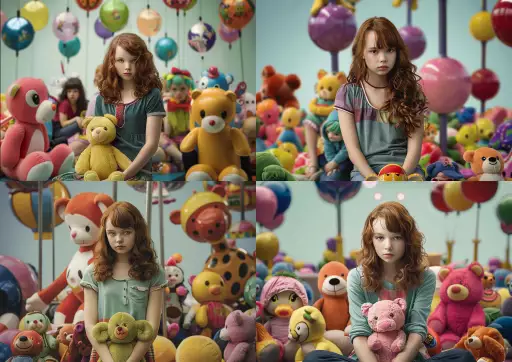Explore the Best AI Image Gallery

The Augmented Canvas: How 5G is Redefining Creativity
5G, the fifth generation of wireless technology, is poised to become more than just a faster internet connection. Its a catalyst for innovation, promising to reshape industries and fundamentally alter the way we create and consume art. In the creative landscape, 5Gs high bandwidth, low latency, and massive connectivity capabilities are unlocking unprecedented possibilities, empowering artists, designers, and innovators to push the boundaries of imagination.
Unlocking New Dimensions of Creative Expression
One of the most significant impacts of 5G on the creative industry is the rise of immersive experiences. Augmented reality (AR) and virtual reality (VR) technologies, already gaining traction, will be supercharged by 5Gs speed and responsiveness. Imagine artists painting in a virtual space, their creations interacting with real-world elements in seamless harmony. Or designers visualizing intricate product designs in 3D, manipulating them with intuitive gestures.
This convergence of the physical and digital worlds opens up exciting avenues for storytelling and audience engagement. Museums can offer AR tours that bring exhibits to life, while theatrical productions can integrate interactive elements, blurring the line between performer and spectator.
Real-Time Collaboration: Breaking Down Creative Barriers
5Gs ability to connect devices instantly and reliably is revolutionizing collaboration in creative fields. Imagine a team of musicians scattered across the globe composing and performing music together in real time, each musician contributing their unique talents without geographical constraints. Or a group of architects collaborating on a building design, visualizing changes in 3D as they are made, regardless of location.
This instantaneous connectivity fosters creativity by allowing artists to draw inspiration from diverse perspectives and break down traditional barriers that often limit collaboration.
The Democratization of Creativity: Tools for Everyone
5G is also paving the way for a more inclusive creative industry. By enabling access to powerful tools and resources through cloud-based platforms, 5G is democratizing creativity, empowering individuals with limited access to traditional resources to participate in the creative process.
Think of aspiring artists who can now access professional-grade software and mentorship through cloud-based platforms, or musicians who can collaborate with others worldwide using affordable VR headsets. 5G is breaking down financial and geographical barriers, making creativity accessible to a wider range of individuals.
Ethical Considerations: Navigating Uncharted Territory
As with any transformative technology, the widespread adoption of 5G in the creative industry raises ethical considerations that require careful attention. Data privacy and security are paramount concerns, as artists and designers increasingly rely on cloud-based platforms to store and share their work.
The potential for bias in AI-powered creative tools also needs to be addressed. Its crucial to ensure that algorithms used in generating art or design do not perpetuate existing societal biases and that diverse voices are represented in the development of these technologies.
Looking Ahead: The Future of Creativity is Connected
5G is poised to revolutionize the creative landscape, empowering artists, designers, and innovators with unprecedented possibilities. Immersive experiences, real-time collaboration, and the democratization of creativity are just some of the exciting trends that 5G will foster. As we navigate this new era, its essential to address ethical considerations and ensure that the benefits of 5G are shared equitably. The future of creativity is connected, and 5G is the bridge connecting us to a world of boundless imagination.








